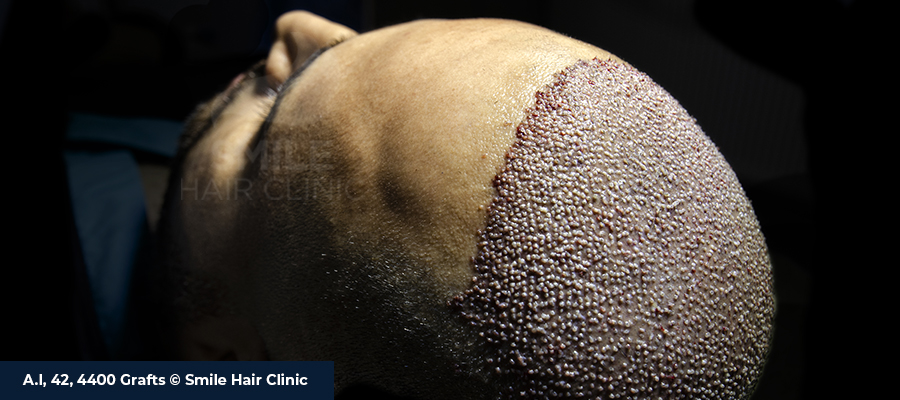The Effect of The Number of Graft

The Effect of The Number of Graft on the Results of Hair Transplantation
Although many articles present the number of grafts as the most crucial feature that will affect the result of hair transplantation, it gives us only limited information about the result. Although the patients find the number sufficient, they cannot understand why the result is unsatisfactory.
In addition to the number of grafts, it is necessary to evaluate the number of hairs in each graft, the thickness of each strand of hair, and the size of the surface area.
We divide mass by volume to determine the density of a substance. If we consider the transplanted new hair as a single substance covering a surface area, the number of grafts x the average number of hairs in the grafts x the thickness of each hair strand gives us the mass. We can think of the surface area as the volume of the spreading mass. Therefore, the higher the number of grafts and hairs per graft and the thicker the hair strands are, the better the results will be for the patients.
The number of grafts is determined by the surface area and density of the donor area. In short, a large and dense donor area means more grafts. Another point is that people with large donor areas also have large areas to be transplanted. Therefore, using more grafts to achieve the same density will be necessary. 35-45 grafts should be placed per cm2 to get good results.
The average number of hairs in each graft has been determined as 2.2 hairs/graft. When the grafts of some individuals are examined, it is seen that this number is around 3-4, while in others, it is around 5-6. The multiplicity of this number has a positive effect on the result.
The thickness of a hair strand is measured in microns (micrometers). The diameter of a person’s hair varies between 17-181 microns. This value is the lowest for blond and gray hair and the highest for black hair. When the lowest and the highest possible value is proportioned, the importance of this factor on the result is evident.
Evaluation of the following factors is very important in the planning stage to achieve the desired result in hair transplantation:
- If more than necessary grafts can be collected from the donor area, the recipient area should be calculated. According to this, the appropriate number of grafts should be taken.
- If the number of grafts from the donor area is limited, the recipient area should be limited accordingly.
- If the recipient area is very small, it is best to make incisions first to know the exact number of grafts to be collected.
- If the hair of the individual to be transplanted is fine, incisions/channels must be opened at a specific frequency to reach a certain density.
As a result of the planning made by considering these variables, a satisfactory density can be determined for transplantation to achieve a gratifying result in line with the patient’s request.
 Whatsapp
Whatsapp
